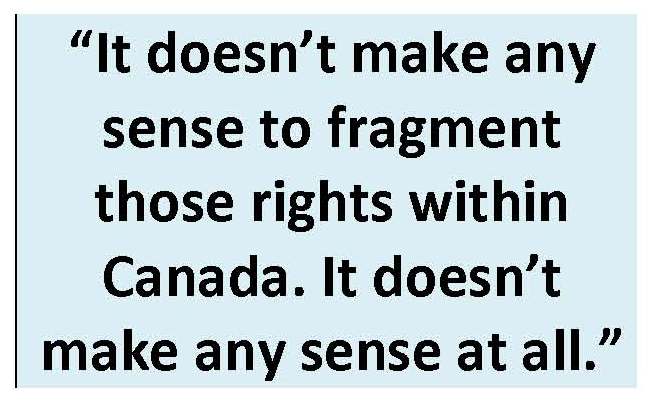
Perry Hoffman
OTTAWA – Broadcasters and digital media companies still haven’t yet found the secret formula on how to make money from digital content, the International Institute of Communications Canadian chapter conference heard earlier this week.
Raja Khanna, co-CEO of broadcaster GlassBOX Television, said after years of trying to make money from digital content using a variety of business models, it’s become clear which models don’t work. While some of the business models may have started to crystallize, now “we can, in black and white, see how we’re not going to make money,” he said during a panel session on the economics of digital media content.
Khanna said it’s important to remember that even with all the video that is being broadcast, distributed or downloaded from the Internet, it’s primarily film and television content. “You have to understand that 80% of 90% of that content on digital platforms or the video content that’s driving 80% to 90% of the revenues on those digital platforms is film and television content,” he added.
While there was general consensus on the panel that generating revenue from digital media content is still somewhat elusive, advances in funding are having a positive impact. Sasha Boersma, senior business manager of interactive at Marblemedia, pointed to changes in the Bell Broadcast and New Media Fund and the Shaw Rocket Fund allowing for the funding on convergent projects a step forward.
Norm Bolen, president and CEO of the Canadian Media Production Association (CMPA), noted that the “forced marriage” between the digital media content companies and the broadcasters is “conceptually a very good idea” because it opens more doors for online content. But he added that “there is a significant funding problem.”
Bolen called for changes to the Canada Media Fund (CMF) guidelines because the producer is being left to fund a significant portion of a project, but with very little ability to secure payment. He noted that the broadcaster is required to pay 10% of the project with the producer funding 40% and the CMF paying for the 50% balance. But the producer can’t get the money to fund its part because the broadcasters are requiring as part of the negotiations multiplatform rights that the producer would normally use to secure funding.
The broadcasters are “vacuuming up a lot of our rights that we used to get” such as alternate channels, unlimited plays, digital rights, merchandizing rights, international distribution rights and others, he said. “So the producer has very little left to sell domestically and without rights, the producers are having a really hard time getting anything for their content and that’s on top of the fact that the online rules are so fragmented that it’s very hard to carve out a niche for yourself and very hard to get people’s attention.”
Khanna took issue with Bolen’s suggestion that independent producers could do a better job of maximizing revenue from digital media content than the broadcasters, noting they need more and more rights because it’s the only way to “become a true multiplatform player. So we have to control all the rights” and “more and more we need international rights” to be successful.
The CMP chief executive acknowledged that broadcasters require certain rights, but said there needs to be equitable sharing of the wealth generated from the content. Broadcasters have a PBIT of 26%, while content providers are in the 4% to 5% range, Bolen said referring to Marblemedia.
“So that inequality in the marketplace is a problem and we aren’t going to be successful as a country going forward unless we have both successful broadcasters and successful content creators,” he said.

The Canadian market is peanuts, and it will always be peanuts, responded Khanna. “It doesn’t make any sense to fragment those rights within Canada. It doesn’t make any sense at all,” he said, adding that it makes more sense to consolidate all those rights with the broadcaster, which has the ability – the marketing clout – to market this content internationally.
Bolen said the broadcasters (or the big dumb core as he described them in a non-pejorative way during the session) need the independent producers because they aren’t capable of creating all the content they need. Broadcasters have no choice but to rely on independent producers, he added.
“That content can only be created by a geographically distributed diverse set of small entrepreneurs who make the content…and that can’t be duplicated or replicated,” Bolen said. “The big dumb core also cannot project that content to the international marketplace. They’re incapable.”
Shubo Rakhit, a partner with KPMG, agreed that no one single business model will be right for all projects. But with the distribution channels for digital content already available, the big challenge is now up to the content providers to convince consumers to pay for the content.
He noted that there appears to be a number of models emerging especially since some segments of society, largely the younger generation, are willing to provide personal information in exchange for access to services and applications. According to KPMG research, half of all mobile users are willing to accept advertising on their devices in exchanges for free services or applications.



